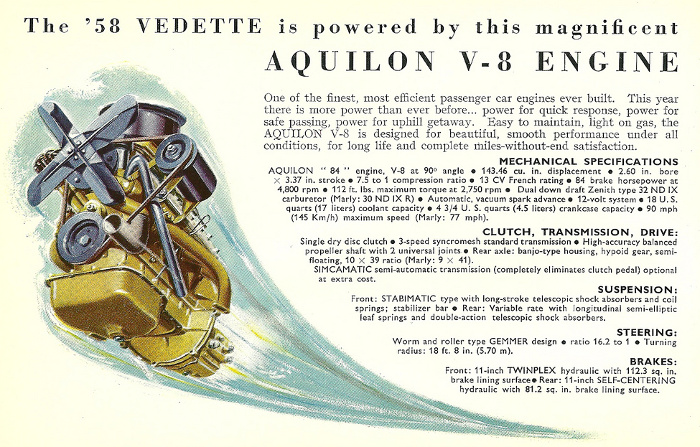Ford Flathead engine identification - Part III
I had several requests about engines that are not covered by the two article before. This post will be about the Lincoln V12 Flatheads and all European Flathead V8.
Let's start with a quick look at the Lincoln V12 Flathead Engines. Lincoln had build V8 engines since 1917 and L-Head V12 engines since 1932, but the 1936 Zephyr was the first that was based on the 1932 Ford Flathead. As you can see on the next picture, the Lincoln L-Head V12 had a differend engine design than the later Zephyr V12. The L-Head look more like an aeroplane engine.

The Zephyr V12, Lincolns Flathead, was available in three sizes:
267 cui, 292 cui and 306 cui (4.4 L, 4.8 L, 5.0 L). All engines had a 75° cylinder angle (Ford Flathead V8s have 90°). The 267 had 110 hp and was build from 1936 to 1939. 1938/1939 models have hydraulic lifters. The 292 was build from 1940 to 1948 with a break of three year between '43 and '45, cause of WW2. The crappy 306 was only build one month in 1942. The 306 was basicly a bored-out 292, resulting in to thin cylinder walls. This fact made the 130 hp 306 engine impossible to rebuild, cause the cylinders could not be re-bored.
The German Flatheads: till 1940, Ford Köln produced the same cars and trucks as the Ford factory in Detroit Michigan. The 3-ton V3000S was the first truck that was build in and for Germany. It was based on the 098T/099T US truck series and had the 239 cui V8 (G61T). Most parts were interchangeable between german and US trucks. This fact leads to a wild mix of parts in the end of the WW2. Allies used german trucks for spare parts and the same did the Wehrmacht with US trucks. The V3000S was produced till 1948. Because of less fuel in the end of WW2 and the first years after the war, many trucks running wood gas exist these days.
From 1948 to 1954 Ford Köln produced the Ford Rhein (G398TS), that was based on the V3000S. The truck had the 239 cui V8 with 90-95 hp. The engine code was G29T. The cylinderheads and blocks hat casted "FK" (for Ford-Köln) instead of "Ford".
The G29T was also used in the 1951-1954 Ford FK-3500 and the 1956-1961 G398SAM.

The French Flatheads. 1935, two years before the 17 stud flathead hit the US marked, Matford (France) introduced a 2.2 l flathead V8 with 17 stud. Matford was a joint venture of Ford (60%) and Mathis (40%) till 1940.
The same engine was used by Ford after WW2 till 1947. In 1948 Ford SAF introduced the Ford Vedette, powered by the 2158 ccm Aquillon engine. This Flathead was also a 17-stud V8. Heads were casted with Ford SAF.


In 1954, Ford sold the manufacturing business to Simca and the Vendette was continued as Simca Vendette between 1954 and 1961. The engine was now a 2.4 l Aquilon flathead.
The history of the larger French Flatheads start in 1940 with the Matford F917WS. It was powered by the 221 cui Ford Flathead and since 1941 by the 239 cui.
The next bigger truck with a Flathead engine was the Ford Cargo F798WM. It was introduced in 1949 and had 239 cui. After Ford was sold in 1954, the truck continued as SIMCA Cargo from 1955 to 1960.
An important change was made in 1959. The 3924 ccm V8 was enlarged to 4184 ccm. This engine version is what most people mean by talking about a "French Flathead". In 1960 the SIMCA Cargo was renamed to UNIC Cargo and sold under this name till 1966.
Because the french army was looking for a small off-road truck, like the german Unimog, SIMCA developed the SUMB. It was produced between 1964 and 1973. It was powered by the SIMCA Cargo 4.2 l Flathead. The french army used the SUMB with the flathead engine till 1994 - so the Flathead engine, developed in 1932, was used for over 6 decades!
Ok, this article is more a view on the history, rather than a technical description about the differences of the engines. Nevertheless I hope you enjoyed it.
